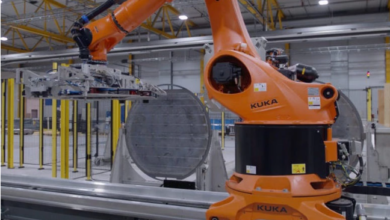Russian steelmaker contemplates green hydrogen for the new plant

Russia’s mining and metallurgy company which owns Mikhailovsky HBI in a JV with USM, another mining and metal company, considers green hydrogen an option for its new commissioned HBI plant.
We assume that up to 30% of natural gas for the reformer can be replaced by hydrogen,” Metalloinvest representative told H2Bulletin.
The Russian steelmaker added that it is vital that the new plant is designed based on the principles of carbon-free metallurgy, with the prospect of fully transitioning to the use of “green” hydrogen as a reducing agent.
H2Bulletin noted that the company discusses different scenarios for hydrogen production, and we are open to proposals from our possible partners.
The company explained that among scenarios are using green hydrogen (obtained by electrolysis using energy from renewable sources), yellow hydrogen (produced using energy from atomic plants) and blue hydrogen (obtained from natural gas using the process of separating carbon dioxide from it, while collecting, storing and disposing of carbon dioxide).
The source of hydrogen can determine the price of the final product, and it is important to fully understand the implication of the raw material on the final product. Green hydrogen is currently expensive compared to other types of hydrogen.
The plant is designed for the production of HBI for the market. There is an expectation that the global consumption of hot briquetted and direct reduced iron will grow by 17% in 2030 to 124 million tonnes. The main growth regions would be Europe and China, which are struggling to reduce emission. Metalloinvest said that the new HBI plant would target these markets.
HBI can be a game-changer for the steel industry if produce through green hydrogen. HBI requires less energy for producing steel, and so emit less GHG emissions. It can be used in blast furnaces for energy efficiency and reducing coke consumption. It can also be used in EAFs to replace pig iron. Several companies are now considering blending hydrogen with natural gas for direct reduction.
The US’s Cleveland-Cliffs completed its direct reduction plant in 2020, using natural gas and direct reduction-grade (DR-grade) iron ore pellets as the main raw materials in the process. It recently announced to further reduce its GHG footprint at the new DR plant by using hydrogen. It evaluates partnerships with hydrogen producers to substitute natural gas use with hydrogen when it becomes commercially available in significant quantities. The company said that it could replace up to 30% of the plant’s natural gas consumption with hydrogen without modifying the plant’s configuration. This would result in around 450k tonnes/year reduction in GHG emission. The blending ratio can be increased up to 70% with limited equipment modifications and investments, contributing to about 1 million tonnes/year reductions in GHG emissions.
